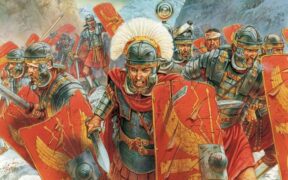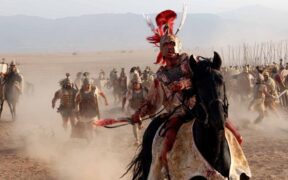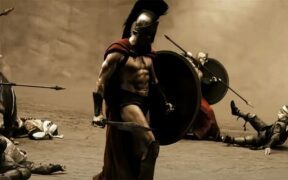Exploring 9 French Sword and Sabre Types
NO AI USED This Article has been written and edited by our team with no help of the AI
The French saber is the most iconic French sword that shaped Europe to its core with the march of Napoleon. It is a curved sword that lived through the French Revolution and is still being used in the French army today.
There are many variations of the French saber which changed throughout the years – from a shorter and slightly curved sword to a much larger, heavier, and straighter blade.
1. French / Hungarian Style Saber

This sword was not regulated during the Consulate and the First Empire, yet it was used by all infantry officers whether on foot or in a horse-drawn carriage. The specifications of the frame and sheath as well as the size and shape of the blade can be very different, especially its width.
Its general shape, “melon-ribbed” pommel, “checkered” ebony plates, and “more or less beaded” guard branch gave it a lasting style, and many versions of it continued to use these features after the Restoration. When it is in golden color it is meant for the general infantry; when it’s silver it is meant for light infantry units.
French swords have a strong curve with a handle protected by a guard and crossbar. They are usually around 37 inches (95 cm) long.
2. French Mameluke Sword

In the Battle of the Pyramids, the French defeated the Mamelukes and seized command of Lower Egypt. It was a hard battle and many lives were lost, mainly because of the fearsome charge of the Mamelukes with their swords.
After the battle, the French were enthralled by the beauty of the Mamelukes’ scimitar. Many cavalry officers took it up right away and began using it. This mameluke type of sword was frequently used in the 1800s and was manufactured in France too. It even spread to the United States where it was used as a sword in the Civil War.
The blade is curved which is why it was mainly used by cavalry units in combat. Its overall length is around 35 inches (90 cm).
3. Saber Model 1767 – Briquet Sword
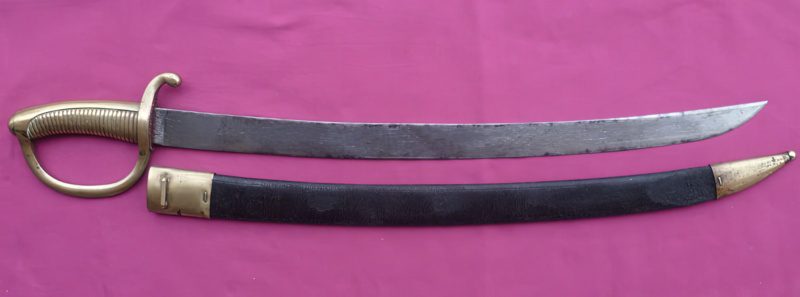
This is probably the first type of saber that became widely used in France. Its first origins are from around 1767 and it was used more frequently by infantry than by cavalry units. It is much shorter than the regular type of French saber.
Its uses in warfare were limited because of how short it was. The French cavalry often called it the shoe nail because of its small size. Because of its limited use, it stopped being produced entirely in 1831, but its design still played a prominent role in future models.
It was used by grenadiers, artillery, infantry, and cavalry units. Its average length was about 23 inches (60 cm). You may have seen this type of saber used to open a champagne bottle.
4. Saber Model 1790 – French Revolution Sword
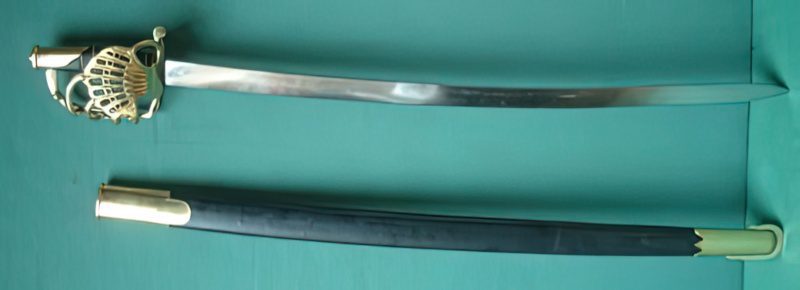
During the French Revolution, the latest design, called the 1790 model, came out with a guard that was all one piece. The design rules were no longer always followed like before, so we often find swords with hollowed sides on the blades and hardware made of red copper.
This design followed the same curvature as before but wasn’t nearly as wide. The guard was also larger so that the user’s hand would be shielded when in combat, something that was happening a lot during the revolution.
It was around 25 inches (65 cm) long. This sword was quickly modified directly after the war ended.
5. Saber Model 1800 – An Ix

The French light cavalry troop used the An IX-mounted cavalry model saber from 1800-1801. It comes from the new weapon systems and arming plan put forward in 1800 which tried to cut down on the number of regulation sabers for all types of troops.
The Hungarian style saber directly influenced this model. It is very curved but also has a protective guard for the user’s hand. This model is a direct inspiration for the later 1816 and 1820 models.
It is a light cavalry sword and is mostly meant for slashing motions. Its overall length is around 39 inches (1 meter).
6. Saber Model 1816 – Ancestor of Many

After the collapse of the first empire, it was decided that Colonel Cotty should be in charge of reorganizing the weapons used by the French military. The light cavalry, the heavy cavalry, the artillery, and the infantry would each get their own model and this is the model they received.
This model was employed until the end of the Bourbon Restoration in France. It was the ancestor of all sabers created until the 1896 model.
It was used in mounted and hand-to-hand combat situations. This model is around 41 inches (105 cm) long.
7. Saber Model 1821 – Identical Infantry Sabre

This sword comes from general Marshal Victor, a general in the French Revolution who led a significant portion of the French infantry. This sword was the classic French sword used by all members of the infantry.
When it started being used, it quickly spread throughout the ranks because of its ideal close-quarters length – 29 inches (75 cm). This sword remained unchanged until the end of the 19th century.
8. Saber Model 1822 – Montmorency Sword
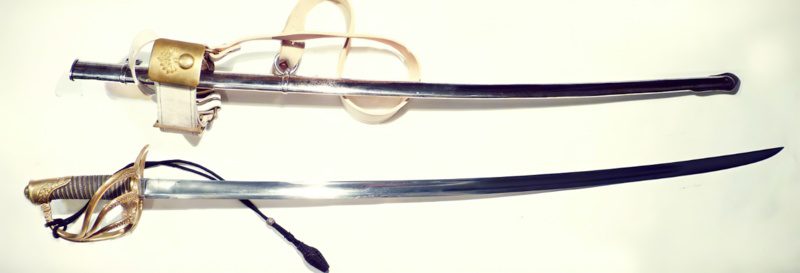
This style of sword doesn’t curve as much as its predecessors. When it came out, it quickly replaced all the previous models and was favored by the French army for the next 150 years during the Crimean War, campaigns in Mexico, Africa, and so on. It is still used in the French military even to this day.
There were two models of this saber – a light model for the artillery, infantry, officers, and navy; and a heavier model for the heavy cavalry. This heavy model was the first curved sword that was used by the heavy cavalry units.
It is around 37 inches (95 cm) long. It is commonly used with slashing motions that can prove deadly.
9. Saber Model 1845 – The Straight Officer Sword

This sword arrived in 1845 and became an essential part of the dress uniforms for the French army. This was usually the model used for senior, junior, and warrant officers which is why it had three different variations.
It changed slightly in 1855 when it became even straighter. The model was named after the year of its introduction – 1855. It is very different from the other curved swords and was mostly used for issuing orders to a large group of infantry.
It was used in the First World War and is still being used today. The 1st and 2nd Republican French Guard use it as part of their equipment. The length of this saber model ranges from 33 to 39 inches (85 to 110 cm).
Uses for the French Sabres

French sabres had many uses throughout their centuries of existence. Of course the main use was warfare, but at the same time it had a lot of other uses too.
- French Officers – usually for issuing orders and representing their grandeur and higher status. This meant that their sabres had engravings and higher-quality metal.
- French Infantry – hand-to-hand combat which was fairly common in the Napoleonic Wars. Other than fighting, it helped to clear out thick vegetation, was used in daily activities, and even crafting.
- Artillery – there were special slimmer swords that were used by the artillery. They mainly used their swords if they were overrun and needed immediate defense.
- Navy – the navy sabers were much thicker and heavier. They were used for fighting if it came to that, but most of the time for cutting ropes and as a daily tool.
- Music – the sabers that the drummers used were the most decorated ones. They were there for providing the moral support that the French troops might need on the field of battle.
- Ceremonial – whether it is the coronation of the French King/Emperor or a big battle like Austerlitz, the sabre was the defining tool that the leader could use to show off. In the case of Napoleon, he liked to have his own figure engraved on his golden swords.
